Kingdom Come - the iconic DC mega-hit explained
With DC returning to the world of Kingdom Come next month, we revisit the groundbreaking original
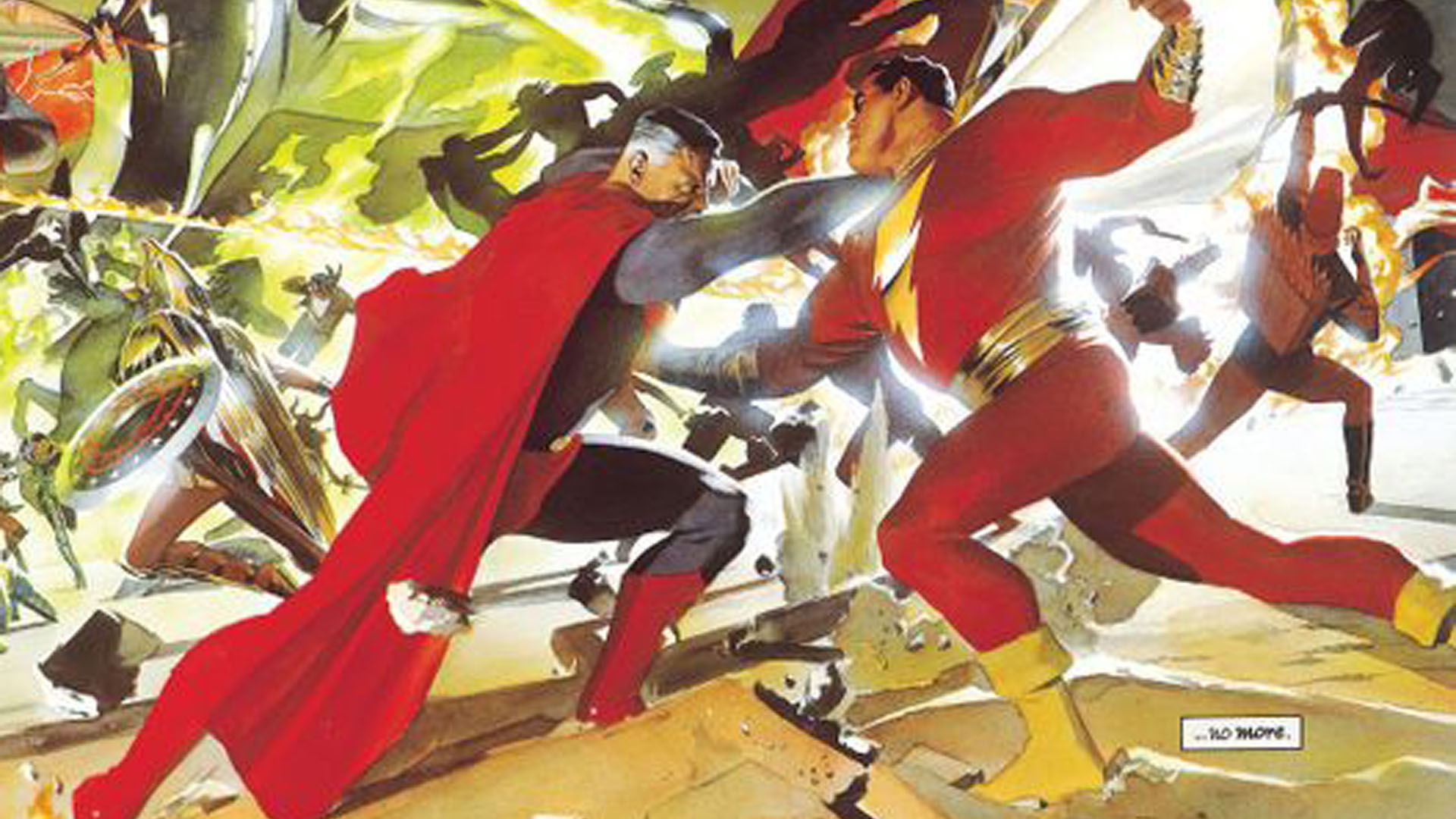
Last week DC revealed that the next issue of World's Finest will be taking a trip back to the universe of Kingdom Come.
Batman/Superman: World's Finest #20 is the start of a five-issue arc, Heir to the Kingdom, that sees the Caped Crusader and the Man of Steel visiting the universe of Mark Waid and Alex Ross's iconic 1996 Elseworld's miniseries and coming face-to-face with their more care-worn counterparts.
But perhaps you've not read the original? If that's the case than you may not know that it's one of the bestselling comic book series in DC's history - and one which Newsarama readers selected as the best DC Comics story of all time.
You may even be wondering what made this magnum opus - which pits the more "extreme," violent superheroes that were in fashion in the mid-90s against the more traditional superheroism of iconic DC characters like Superman - such a commercial and critical smash, and what are the secrets behind its longevity?
Well we have the answers right here...
A dark future for the DC Universe
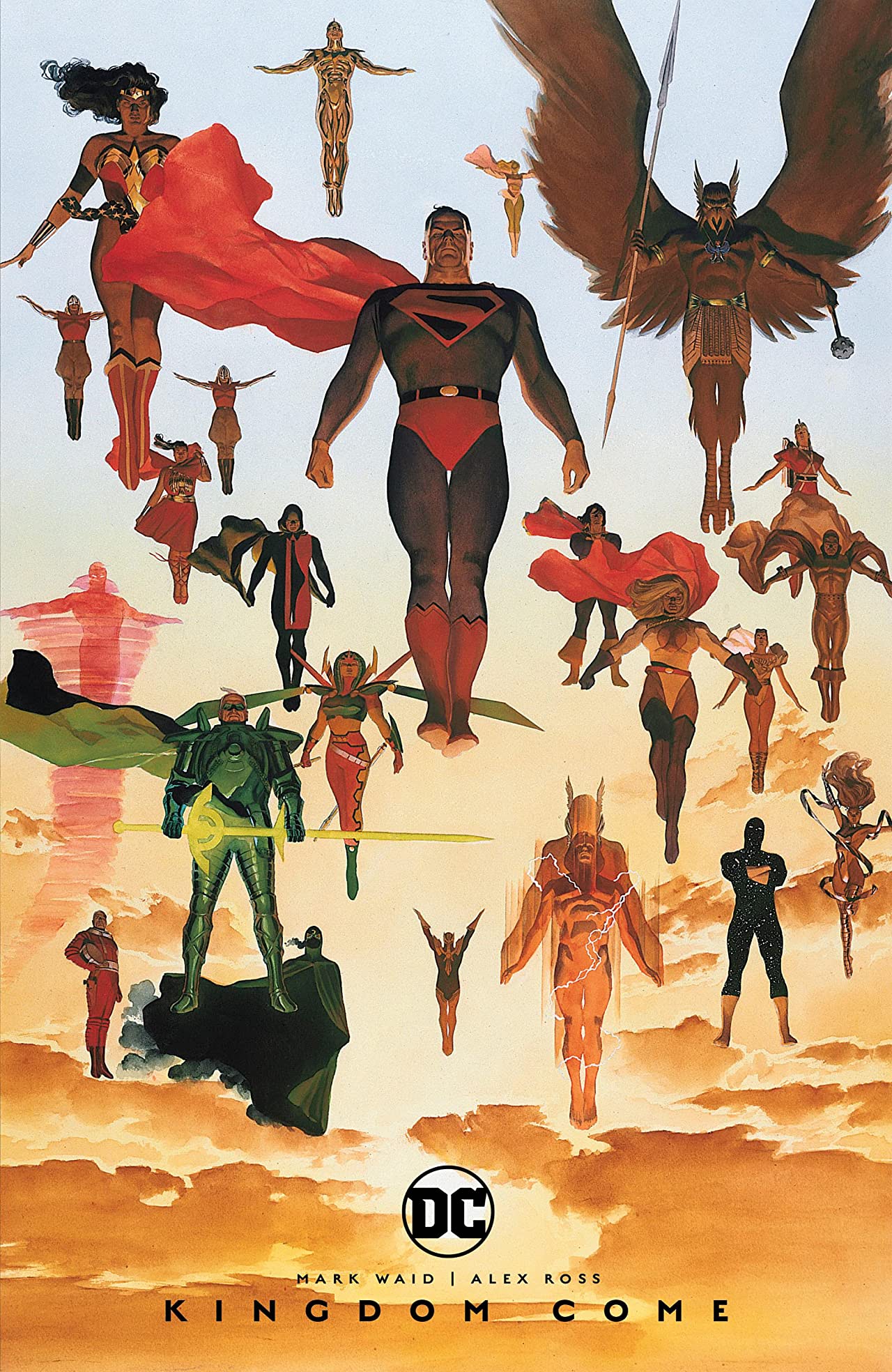
Taking place in a 'possible' future of the DC Universe (today designated as Earth-22 in the DC Multiverse), Kingdom Come is one of the best-selling Elseworlds stories in comic book history.
At the center of its plot is an older Superman with gray hair at his temples and a different version of the 'S' symbol on his chest - one giving off a more mature vibe than the classic ones.
Comic deals, prizes and latest news
Get the best comic news, insights, opinions, analysis and more!
The four-part series was published in 1996, a time when more brutal vigilante anti-heroes like Marvel's Punisher were becoming more popular with readers than old-fashioned icons like Superman. The series pushed back against that idea, specifically pitting Superman's brand of good-natured heroism against the harsher kind dished out by '90s heroes.
Kingdom Come set the conflict between these ideas in the far-distant future of the DC Universe, allowing its creators to emphasize how violent justice might eventually get out of hand.
The series' plot came from the mind of superstar painter/writer Alex Ross, who enlisted the help of co-writer Mark Waid to bring it to fruition. Kingdom Come used striking, realistic gouache paintings by Ross to tell its story and introduced a slew of new heroes of the future, some inspired by current-day heroes and others the offspring of well-known icons.
Goodbye Clark Kent
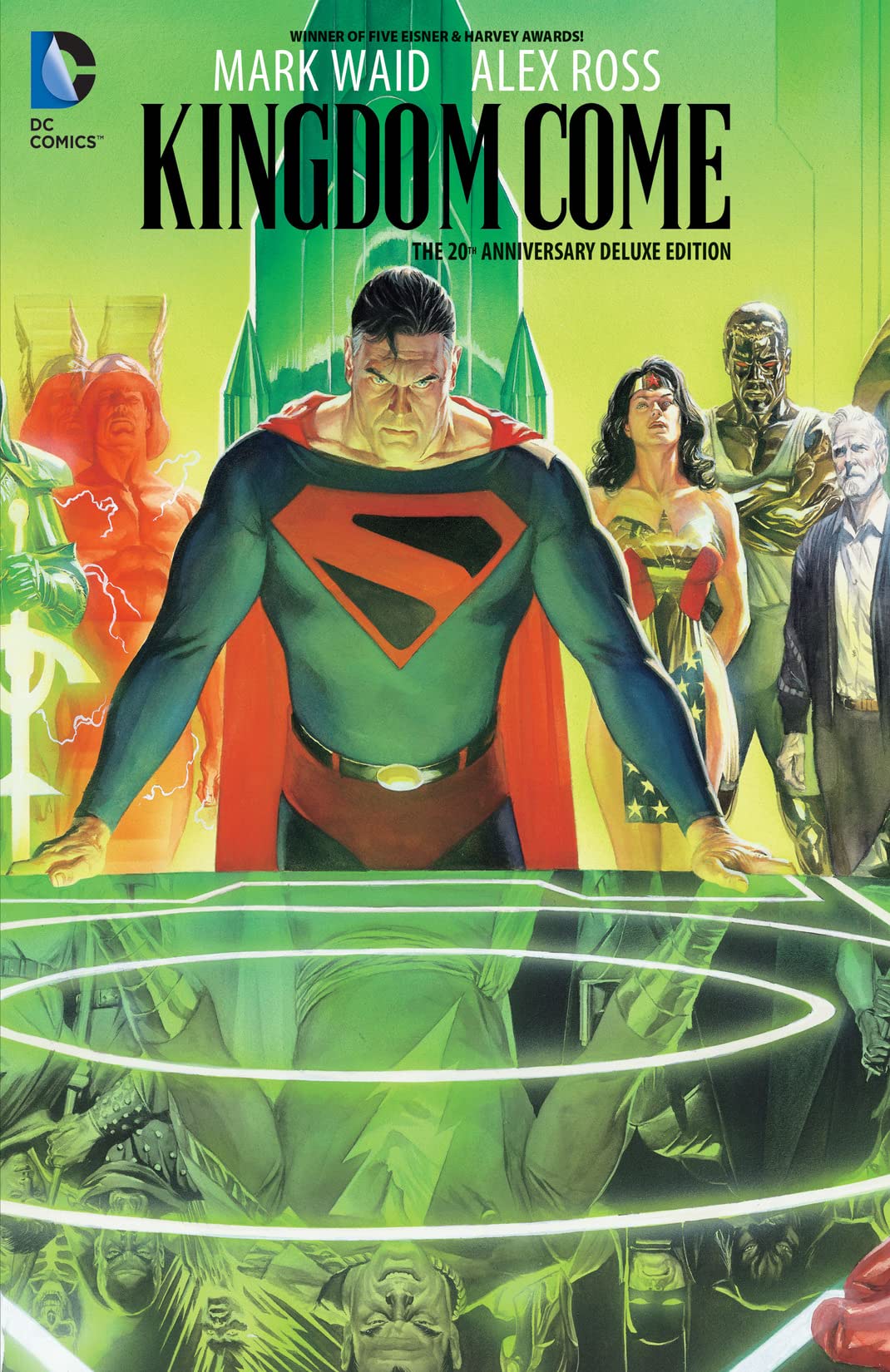
Kingdom Come takes place in a world where Superman has retired after the Joker killed Lois Lane.
Fans of the video game Injustice: Gods Among Us might recognize that idea since the Joker’s murder of Lois was the game's inciting incident. But 1996's Kingdom Come explored it first, although from an alternate angle.
While Injustice featured Superman avenging Lois's death by killing the Joker (which caused Superman to turn bad), Kingdom Come had a different approach. In this story, a younger hero named Magog (a pastiche of Marvel's then newly-popular sorta anti-hero Cable) did the retaliatory killing of the Joker.
Superman arrested Magog, who was tried for the murder of the Joker. But the court found Magog innocent and the world hailed the young character as a hero. After the verdict, Superman was so disappointed in the world's acceptance of brutal justice that he quit being a superhero.
He no longer lived as Clark Kent in the world of human beings, choosing to retire to the Fortress of Solitude and live in isolation as a farmer.
And Justice for All
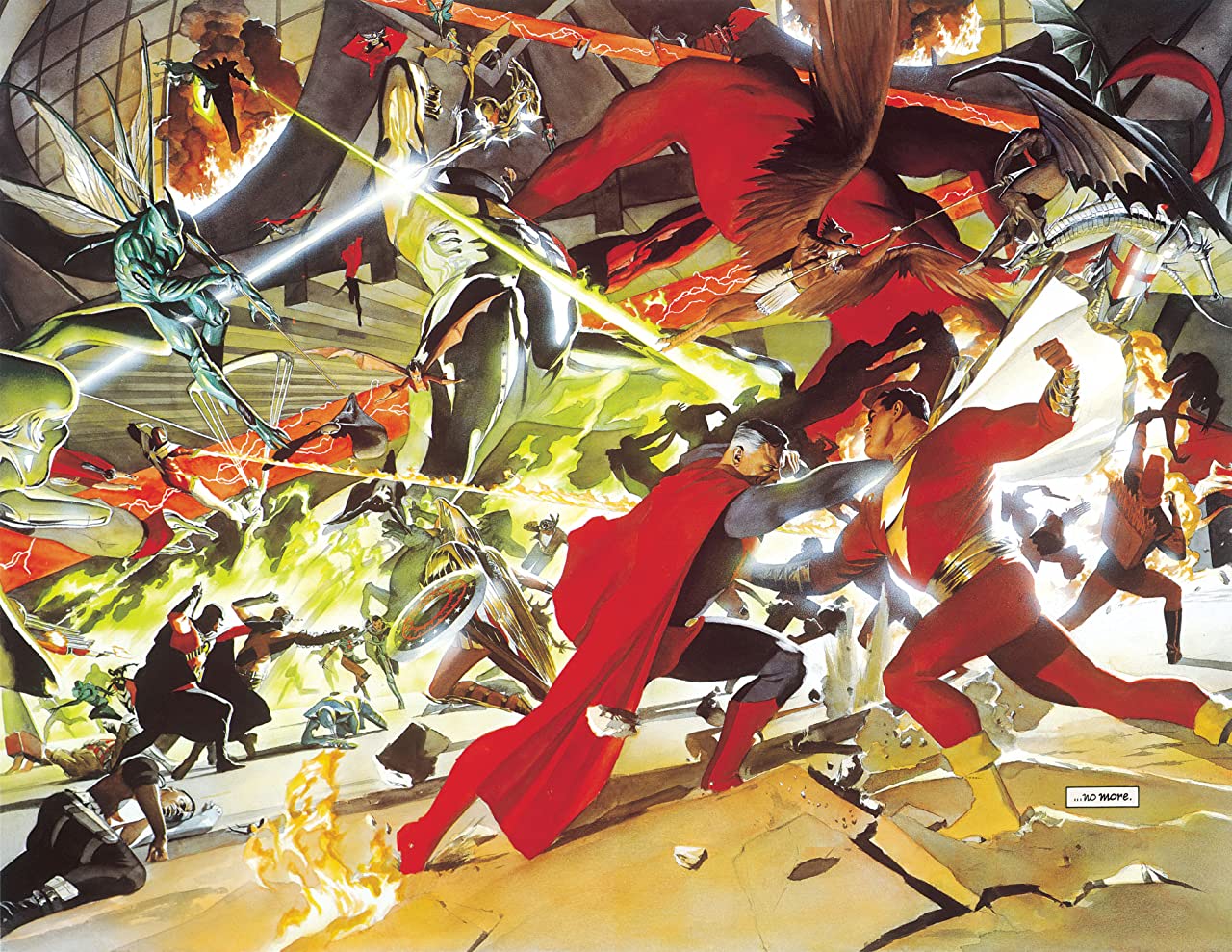
Without Superman as the guiding force in the superhero community, the line between hero and villain blurred. It was difficult to tell who was the villain and who was the hero, and the fighting between them began to claim the lives of innocent bystanders.
Not to spoil the entire story, but as you can imagine, Superman has to eventually return. And the good guys have to fight the not-quite-as-good guys.
And while various DC heroes take different sides in the story, Superman holds fast to his belief that brutality is never justified. Superman and his values of truth, justice, and the American way are unchanged by the blood-thirsty world around him.
By the end of the story, Superman comes out of retirement, taking on the responsibility of protecting the world again, and finding contentment in a new life without Lois. In the final pages, the aging Wonder Woman and Superman announce to the gray-haired Bruce Wayne that Wonder Woman's pregnant with their child.
Post-Kingdom Come
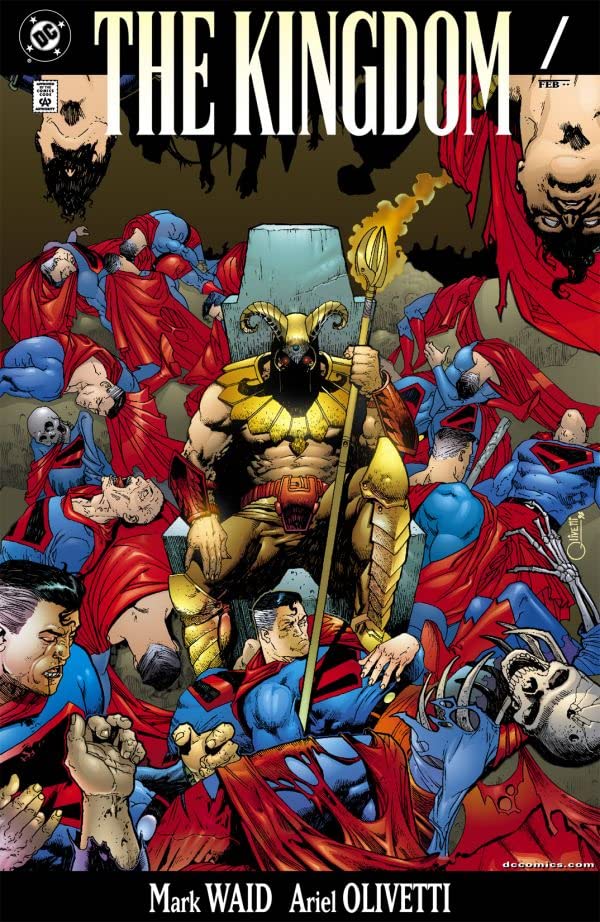
After the publication of Kingdom Come, this version of Superman became a familiar and beloved character among die-hard DC readers.
Kingdom Come Superman was featured again in The Kingdom, the aforementioned sequel Waid wrote for DC without Ross' involvement, and the publisher released a prose novel version of Kingdom Come, adapted by Elliot S. Maggin.
A version of KC's Superman also made a subsequent appearance in the first arc of 2003's Batman/Superman title - though it was later revealed this Superman, despite looking like the Kingdom Come version, was from a different, even darker Earth in the Multiverse.
In 2008, the Kingdom Come Superman eventually came to DC's mainstream continuity, traveling from his alternate Earth (by this time nicknamed Earth-22 and part of DC's Multiverse continuity) to interact with DC heroes in Geoff Johns' and Dale Eaglesham's Justice Society of America.
Interestingly, Kingdom Come Superman stuck around with the JSA for some time, becoming a full-fledged member of the team for several arcs, culminating in a spiritual prequel/sequel titled 'Thy Kingdom Come,' in which he faced off against the main DC Universe's Magog and his ally Gog.
A subsequent limited series, Justice League: Generation Lost, tied the villainous Maxwell Lord to Kingdom Come's future, with Lord allying with Magog, and even experiencing visions of the events of Kingdom Come.
2011's New 52 reboot wiped away most aspects of Superman's previous continuity - including KC Supes's jaunt to the core Earth, and Generation Lost.
Since the reboot, Kingdom Come Superman hasn't made a comic book appearance, but he did inspire the CW's DC-TV version of Crisis on Infinite Earths. Brandon Routh from the 2006 feature film Superman Returns reprised his role with a look clearly inspired by Kingdom Come.
More recently (and speaking of Max Lord), Wonder Woman 1984 featured Diana donning a version of the gold battle armor she wears in Kingdom Come's climactic clash.

While the classic tale's 25th anniversary came and went without a celebration Magog and the Kingdom Come world of Earth-22 made a brief appearance in the 2021 Infinite Frontier limited series, and Magog appeared as the villain of 2022's Earth-Prime comic book limited series set in DC's live-action TV Arrowverse continuity.
And this year Magog made a surprising return under a different name... It was revealed in recent issues of World's Finest (also written by Kingdom Come creator Mark Waid) that Superman's sidekick Boy Thunder - AKA David Sikela - will one day grow up to be the villain. It was an exciting twist and one that sets the stage for the thrilling new crossover that begins when Batman/Superman: World's Finest #20 is published on October 17.
Kingdom Come was part of a crazy 1996 for DC and Marvel, the reverberations of which are still being felt today. Check out our look back at the entire year.
Vaneta has been a freelance writer for Newsarama for over 17 years, covering Marvel and DC, and everything in between. She also works in marketing.
- Will SalmonStreaming Editor


